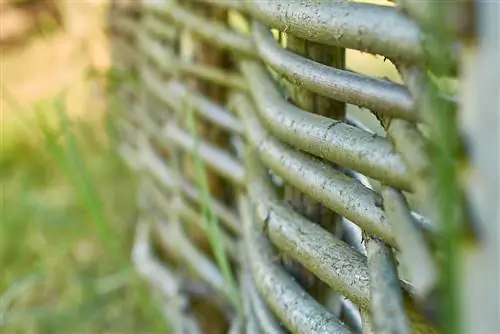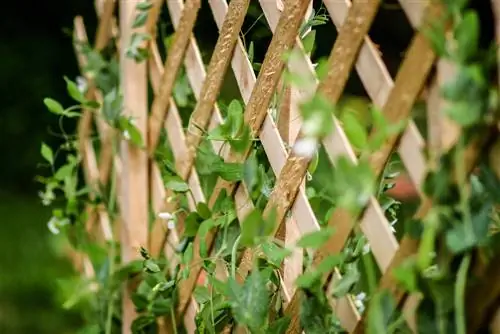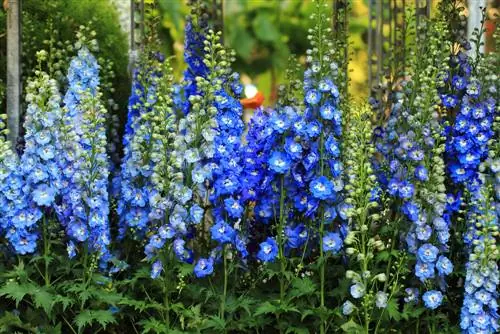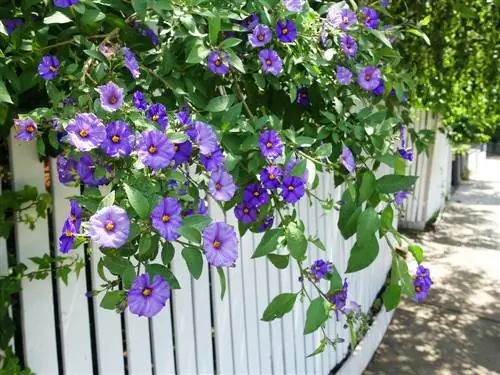- Author admin [email protected].
- Public 2023-12-16 16:46.
- Last modified 2025-01-23 11:21.
Many garden owners or balcony gardeners find a privacy wall made of plastic-like material to be a real aesthetic nuisance within their well-kept garden idyll. Uncomplicated and at the same time extremely decorative variants of a natural privacy screen can be created through creative and artistic weaving with cuttings or dead branches.
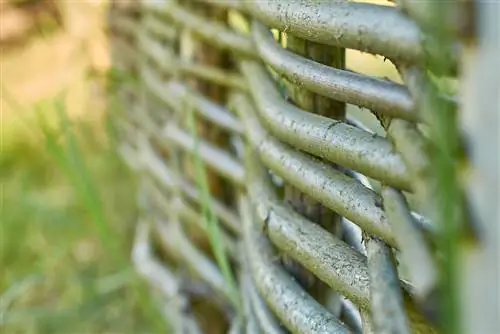
How to weave a natural privacy screen?
You can weave a natural privacy screen by using fresh hazelnut branches, reeds or bamboo stalks and weaving them horizontally between vertical branches. Alternatively, fresh willow branches can be stuck into the ground and braided diagonally to create a living privacy screen.
Weave a privacy screen from cut twigs and branches
If a privacy screen is to be woven from natural materials, the first question that arises is whether it should be a fence that is connected to the ground in place or a mobile privacy screen element. In any case, the fresher they are processed directly after cutting, the easier and more flexible the cutting material from hazelnut bushes and other vigorous garden plants can be weaved into a privacy screen element. To create a border around a cottage garden or a privacy screen next to a terrace, you can use long, straight branches directly in a row and at a distance of approx. Insert 5 to 10 cm into the ground. Then weave thinner branches horizontally between the branches protruding vertically from the ground so that a closed privacy wall is gradually created.
Bamboo and reed as weaving material
Many types of reeds are completely cut back to ground level every spring. Some species of bamboo also grow as they age, which creates large amounts of cutting material every year. Due to their straight growth habit, these cut stalks can be used even better for weaving privacy walls than many other branches of shrubs and trees. The regular shape also makes it possible to make entire privacy mats from reed and bamboo stalks by firmly connecting the individual stalks at two different heights with braided wire loops (€10.00 on Amazon).
Dead or alive an eye-catcher: braided willow rods
The willow branches, which are known to be extremely easy to root, are very popular when it comes to creating cost-effective and uncomplicated creative play areas for children in the garden. The willow branches, which grow easily in place, can not only be formed into a teepee or labyrinth, but can also be used to form living privacy fences by cleverly interweaving diagonally running branches. The branches should be:
- processed as freshly as possible after cutting
- be inserted deep enough into the ground (at least 10 to 15 cm)
- be watered sufficiently (willows prefer a more moist location)
Tip
If a living privacy screen made of willow branches does not stay in its braided shape on its own, only specially coated binding wire should be used to fix the crossing positions, which cannot easily cut into the bark of the branches.

